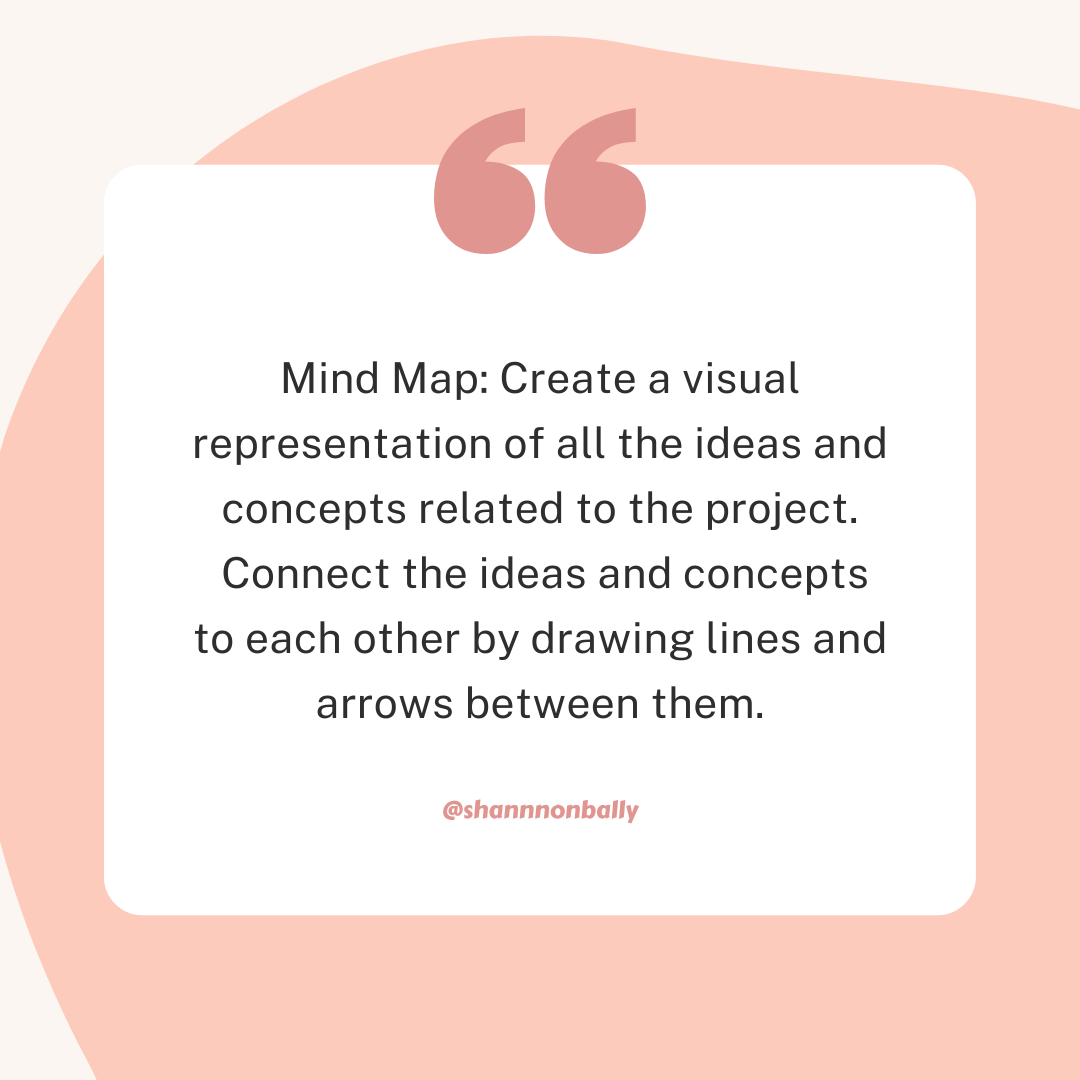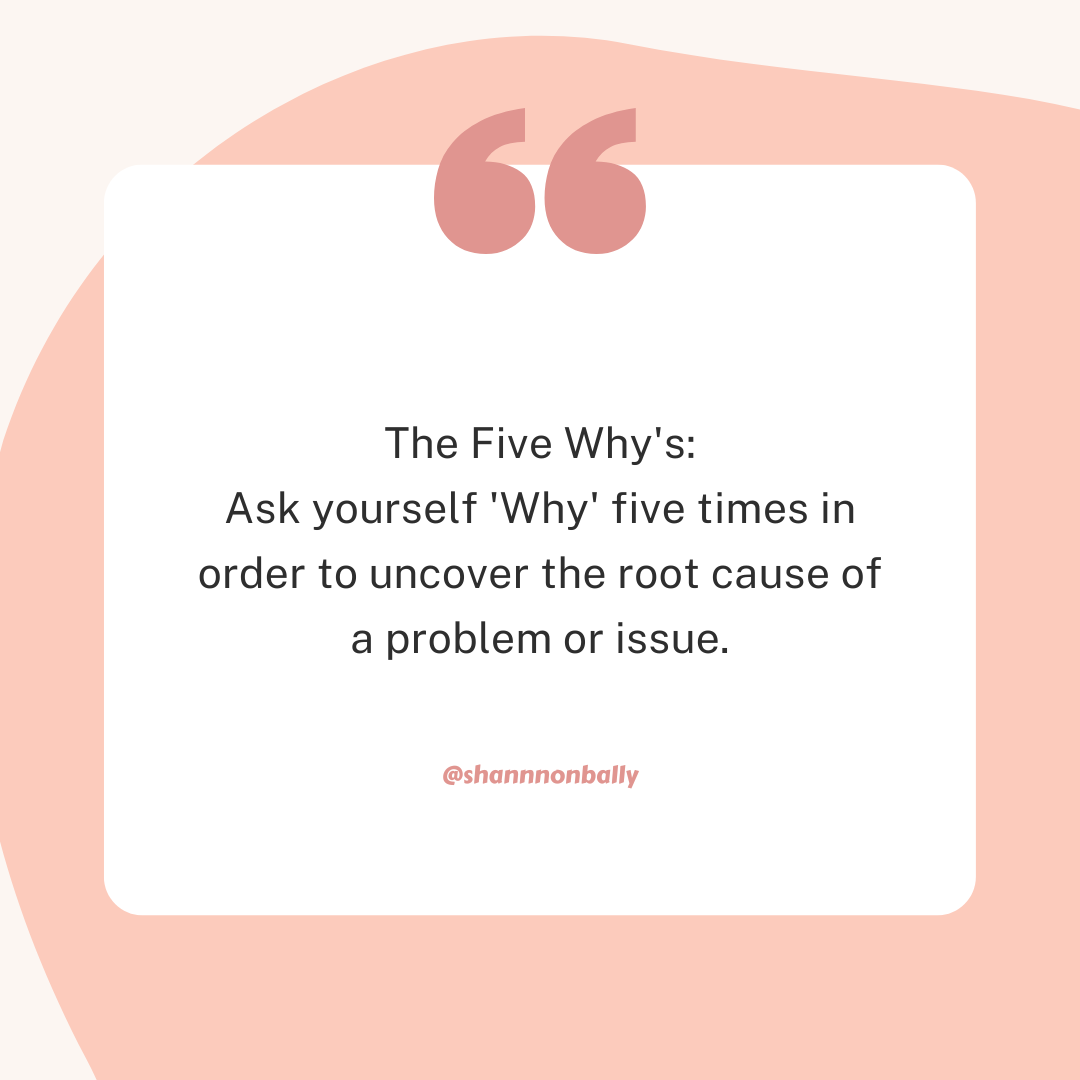5 Ways to Brainstorm Like a Pro
5 different brainstorming methods to jumpstart your creative process
Whether you’re brainstorming for a big project at work, or you’re helping your child’s student council brainstorm fundraising ideas, there are several different ways to go about the process.
A few things to think about before you get started:
Will you be brainstorming alone or with others?
How will you record all your ideas? Using paper, digital, post-its?
Which method below will you use? Can you combine two of these to make your own special brand of brainstorming?
However you decide to get the thoughts and ideas out of your head and onto something visual, know that there’s no '“wrong” way. As long as it’s a tool that helps you organize your thoughts, you’re on the right track.
Brain Dump: Start by writing down all the ideas that come to your mind for the project, regardless of how random or unrelated they may seem.
A brain dump is a term used to describe the act of transferring all the information or knowledge stored in one's brain onto paper, a computer, or other external storage device. It typically involves writing down or typing out everything you know about a particular topic or subject, without worrying about structure or organization.
The purpose of a brain dump is to free up mental space by getting everything out of one's head and onto a tangible format that can be reviewed or referred to later.
Brain dumps can be useful for studying, problem-solving, idea generation, or simply for decluttering the mind.
Mind Mapping: Create a visual representation of all the ideas and concepts related to the project. Connect the ideas and concepts to each other by drawing lines and arrows between them.
A mind map is a graphical tool used to organize information and ideas visually. It is a type of diagram that is used to represent concepts, ideas, tasks, or other items linked to and arranged around a central theme or topic. The central idea is usually placed in the center of the map, with related ideas branching out from it in a hierarchical or radial fashion.
Mind maps are often used for brainstorming, note-taking, problem-solving, planning, and organizing complex information. They can be created using pen and paper, whiteboards, or various software tools designed specifically for mind mapping.
In a mind map, ideas and concepts are connected by lines, arrows, or branches, which represent the relationships between them. This allows users to see the big picture and identify connections between different concepts more easily. Mind maps are also useful for summarizing large amounts of information in a visually appealing and easy-to-understand format.
The Five Whys: Ask yourself “why” five times in order to uncover the root cause of a problem or issue.
The 5 Whys technique is typically used in a group setting, such as a brainstorming session, and involves the following steps:
Identify the problem or issue to be addressed.
Ask "why" the problem exists and write down the answer.
Use the answer to the first question to ask a second "why" question, and write down the answer.
Continue asking "why" questions and writing down the answers until you have asked "why" five times.
Use the information gathered from the five "why" questions to identify the root cause of the problem or issue.
Brainstorm possible solutions to address the root cause.
The 5 Whys technique helps to dig deeper into a problem and identify the underlying causes rather than just addressing the symptoms. By repeatedly asking "why," the team can uncover multiple layers of causes and identify the most effective solution to address the root cause.
Reverse Brainstorming: Start with the desired outcome, then list ideas on how to achieve it.
Reverse brainstorming is a creative problem-solving technique that involves identifying the possible causes of a problem and then reversing the process to generate ideas for potential solutions. Instead of focusing on how to solve a problem directly, reverse brainstorming focuses on generating a list of ways to cause or exacerbate the problem, and then turning these negative statements into positive solutions.
Group Brainstorming: Get together with a small group of people and share ideas. Group brainstorming can be a great way to build off of each other’s ideas and gain new perspectives.
Here are some tips for facilitating a group brainstorming session:
Set a clear goal: Start by defining the problem or challenge that you want the group to solve or address. Be clear about the goal of the brainstorming session and communicate it clearly to the participants.
Select the right participants: Invite people who have relevant knowledge, skills, and expertise to contribute to the discussion. It's also important to ensure diversity among the participants to encourage a wider range of perspectives and ideas.
Create a comfortable environment: Choose a quiet and comfortable room that's conducive to creativity and open discussion. Provide snacks and drinks to keep the energy level up. (See my post about creative work spaces HERE.)
Explain the rules: Before the brainstorming session begins, explain the rules of brainstorming to the participants. These include encouraging all ideas, avoiding criticism or judgment, and building on the ideas of others.
Use a structured process: Use a structured process to guide the brainstorming session. This can include breaking the problem down into smaller parts, setting a time limit for idea generation, and using prompts or questions to stimulate ideas.
Encourage participation: Encourage all participants to contribute ideas, even if they seem far-fetched or unconventional. Use techniques such as round-robin brainstorming or silent brainstorming to ensure that everyone has an opportunity to share their thoughts.
Capture the ideas: Record all the ideas generated during the session, either on a whiteboard, flip chart, or digitally. Make sure that everyone can see the ideas and build on them.
Evaluate and prioritize: Once the idea generation phase is complete, evaluate and prioritize the ideas generated. Use criteria such as feasibility, impact, and cost to determine which ideas are most promising.
Follow up: After the brainstorming session, follow up with the participants to communicate next steps and ensure that the ideas generated are acted upon.
Now that you have ideas of how to brainstorm, it’s time to get started; no more procrastinating!
Have you used any of these techniques or do you plan to? Let me know in the comments which one is your favorite.
I can’t wait to cheer you on!
XO,
Shannon






